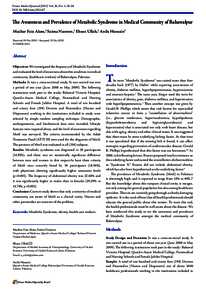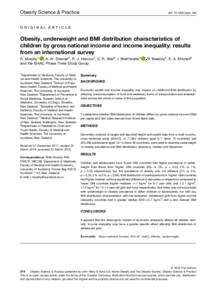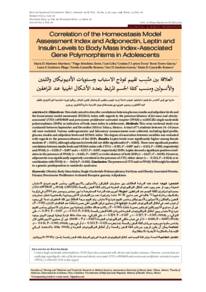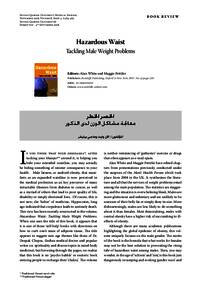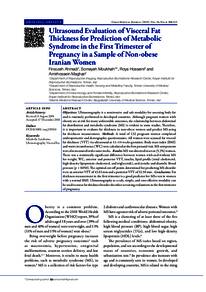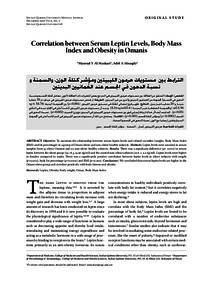Document
The awareness and prevalence of metabolic syndrome in medical community of Bahawalpur.
Contributors
Publisher
Oman Medical Specialty Board.
Gregorian
2011-01
Language
English
English abstract
Objectives: We investigated the frequency of Metabolic Syndrome and evaluated the level of awareness about this condition in medical community (healthcare workers) of Bahawalpur, Pakistan. Methods: It was a cross-sectional study. It was carried out over a period of one year (June 2008 to May 2009). The following institutions took part in the study: Bahawal Victoria Hospital, Quaid-e-Azam Medical College, Paramedical and Nursing Schools and Female Jubilee Hospital. A total of one hundred and ninety four (194) Doctors and Paramedics (Nurses and Dispensors) working in the institutions included in study were selected by simple random sampling technique. Demographic, anthropometric, and biochemical data were recorded, lifestyle features were inquired about, and the level of awareness regarding MetS was surveyed. The criteria recommended by the Adult Treatment Panel (ATP) III were used for the diagnosis of MetS. T he presence of MetS was evaluated in all (194) subjects. Results: Metabolic syndrome was diagnosed in 29 participants (14.95%), and there was no statistically significant difference between men and women in this respectAt least three criteria of MetS were correctly listed by 36 participants (18.56%), with physicians showing significantly higher awareness levels (p<0.001). The frequency of abdominal obesity was 22.68% and it was significantly higher in males than in females (29.29% vs 14.74%; p<0.001). Introduction The term "Metabolic Syndrome" was coined more than four decades back (1977) by Haller1 while reporting associations of obesity, diabetes mellitus, hyperlipoproteinemia, hyperuricemia and steatosis hepatis.2 The same year, Singer used the term for associations of obesity, gout, diabetes mellitus, and hypertension with hyperlipoprotenemia.3 Then another concept was given by Gerald B. Phillips which states that risk factors for myocardial infarction concur to form a "constellation of abnormalities" (i.e., glucose intolerance, hyperinsulinemia, hyperlipidemia (hypercholesterolemia and hypertriglyceridemia) and hypertension) that is associated not only with heart disease, but also with aging, obesity and other clinical states. It was suggested that there must be some underlying linking factor. At that time it was speculated that if the missing link is found, it can affect strategies regarding prevention of cardiovascular disease; Gerald B. Phillips hypothesized that this factor was sex hormones.4,5 In 1988, in his Banting lecture, Reaven proposed insulin resistance as the underlying factor and named the constellation of abnormalities as "Syndrome X." Reaven did not include abdominal obesity, which has also been hypothesized as the underlying factor.6 Conclusion: Current study shows that only a minority of medical community are aware of MetS as a clinical entity. Nurses and other paramedics are unaware of the problem.
Member of
Resource URL
Citation
Alam, Mazhar Faiz, Nasreen, Saima, Ullah, Ehsan, & Hussain, Anila (2011). The awareness and prevalence of metabolic syndrome in medical community of Bahawalpur. Oman Medical Journal, 26 (1), 26-28.
Category
Journal articles

